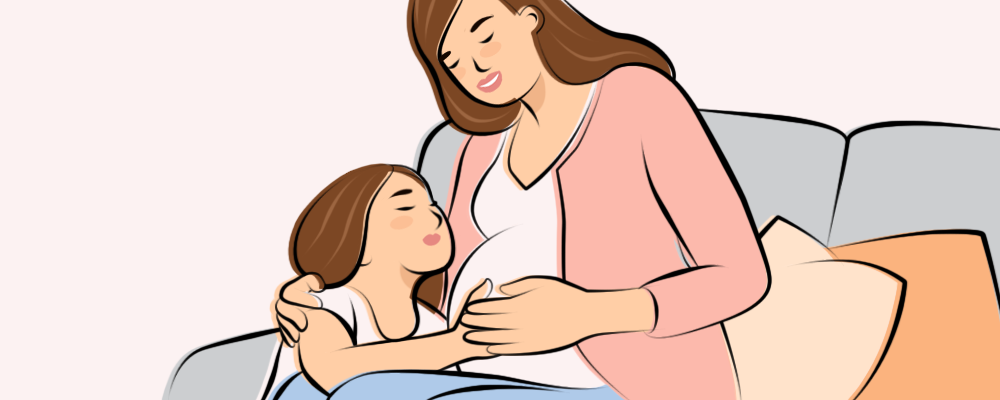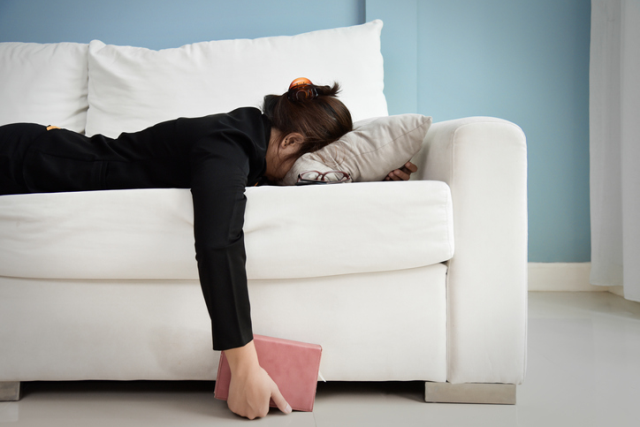A pounding, pulsating headache which gets worse with every move you try to make. A feeling of nausea. Blurred vision or a dizzy sensation, even when seated.
Sound familiar? Then you may be suffering from migraines.
Migraine attacks can be severely debilitating, impacting hugely on the daily lives of many people. But each person’s experience of migraines can be different. In fact, even for the same person, each migraine may be a little different from the last.
People can encounter different combinations of symptoms, at different levels of intensity. Those symptoms can last for varying periods of time and can occur frequently or very occasionally. So how can we make sense of migraine symptoms?
And, most importantly, how can we find relief from them?
Migraine symptoms: from blurred vision to vomiting, here’s what you need to know...
The main symptom most people associate with migraine is a headache. But although migraines can cause intense headaches, they don’t always.
Some migraines can result in one or more other symptoms, without a headache. Other symptoms of migraine include nausea (feeling sick) and visual symptoms (symptoms affecting the eyes or vision).
We’re about to take a look at migraine symptoms in a bit more detail. After that we’ll be ready to see how to relieve them, helping you to find out how to manage migraine pain and discomfort.
Of course, if you’re experiencing migraine symptoms right now, please feel free to skip to the next section straight away.

Migraine headache
Migraines can result in a severe headache. Typically, a migraine headache is felt most intensely on one side of the head, but it can affect both sides. The pain can also affect the face or neck. Unsurprisingly, if you’re experiencing a migraine headache, you may also find it difficult to concentrate.
People tend to describe the sensation of a migraine headache as a severe throbbing, pounding, or pulsating pain. It often gets worse if the sufferer tries to move around, making these headaches a real impediment to getting on with day-to-day activities.
Migraine-related nausea
Feeling sick is another common symptom of a migraine. Some people may also vomit when they have a migraine. Migraine vomiting is, of course, another issue which can seriously affect sufferers’ everyday lives.
In some cases, people begin to feel better after they have been sick, but others may suffer repeated vomiting episodes. Migraines can also cause abdominal pain and/or diarrhea.
Light sensitivity
It’s common for migraine sufferers to be sensitive to light. The medical term for this symptom is ‘photophobia’. The eyes themselves can also become painful, but this is not a common symptom.
If your migraine tends to cause eye pain and blurred vision simultaneously, you should seek medical advice in case your symptoms are caused by something else.
A special form of migraine is ‘migraine with aura’. Aura is a set of temporary sensory warning symptoms which can occur before a migraine begins, or as it develops. Aura can develop over around 5 minutes and last for up to an hour or so. Some people see flashing lights or zig-zag patterns during aura. They may also have blind spots or suffer from blurred vision.
Sound sensitivity
As well as being sensitive to light, people with migraine symptoms can be sensitive to sound — the medical term for this is ‘phonophobia’. Some people also become extremely sensitive to smells (known as ‘osmophobia’).
Other migraine symptoms
There are also a wide range of other aura symptoms, besides those affecting vision. For instance, some people get migraine dizziness. Sufferers have also reported feeling a numbness or a tingling sensation like ‘pins and needles’, which usually starts in one hand and moves up the arm before affecting the face, lips, and tongue.
Aura symptoms can also include difficulty speaking or even loss of consciousness, although this is rare.
How to relieve the pain and discomfort of migraines
Once you begin to record and recognize your migraine symptoms, you can start to develop ways of managing the pain and discomfort they cause.
It’s worth noting that migraine treatments may need to be tailored to the type of symptoms you are experiencing. For example, if nausea is one of your main problems, then you might need medication specifically for that. It’s also important to think about how often your symptoms occur, how intense they are, and how long they last. What works for you, may not work for another person living with migraines, and vice versa.
Lastly, if you often suffer from migraines, you might be a candidate for prophylactic (preventative) treatments, which may reduce the frequency and/or intensity of your symptoms.

Medication (including painkillers, prophylactic and hormone treatments)
Medication to relieve migraine symptoms can be bought over the counter or prescribed by your doctor. It’s really important to be careful how you use medication though. Too much of some migraine treatments can cause ‘medication overuse headache’ (also known as ‘rebound headache’), so always read the information pamphlet for any pharmaceutical you’re trying.
Your doctor should be informed if over the counter medication isn’t helping to control your symptoms, or if you need to use them more often than is advised by the guidelines on the package.
Painkillers
Painkillers are often the first port of call in attempting to relieve the discomfort of migraines. But for many people these aren’t enough.
People who suffer intensely painful migraine headaches may need painkillers prescribed by a doctor instead or specific migraine medication. Triptans are a popular choice here, constricting the blood vessels, reducing inflammation and numbing the pain all at once.
Antiemetics
You can also get some over the counter medications which combine painkillers with a drug to prevent you from vomiting (being sick). But if your medication is prescribed by a doctor, you may be advised to use separate medications for pain and to prevent vomiting.
Medication to prevent vomiting or nausea is called an ‘antiemetic’. Your doctor will be able to recommend the correct dosages to match your personal experience of symptoms.
Prophylactics
Doctors can also prescribe preventative (‘prophylactic’) medications to ease a migraine’s impact. These may be prescribed on a regular basis to either stop migraines from occurring, reduce the length of time an attack lasts for, or slow down the frequency of attacks. Prophylactics usually have to be taken on a daily basis.
Hormone treatments
Some migraines take the form of menstrual migraines, meaning they occur at particular times in a menstrual cycle (e.g. just before a period). These migraines may be prevented or reduced using hormone therapies, again prescribed by your doctor.
Treatments not based on pharmaceuticals
There are ways to manage migraine symptoms without medication.
For example, some people find that acupuncture provides relief. And another innovative treatment which doesn’t involve pharmaceuticals is transcranial magnetic stimulation (TMS) — a procedure performed by a healthcare professional, who applies magnetic pulses to the patient’s head.
Self-care (including rest, exercise and knowing your triggers)
Just as individual people can experience migraines in a variety of different ways, it often takes more than one approach to successfully relieve the symptoms. While some people might respond well to a particular medical treatment, many of us will need to practice some self-care too.
Rest
Resting in a quiet, darkened room can help, since migraine sufferers are often sensitive to light and sound. Applying a cold cloth to the head or neck can be soothing, as can gentle massage of the painful areas on the head. Some people find that they feel better when they eat something too.
Exercise
Some exercises that promote muscle relaxation can be useful in managing the pain of migraines. Exercise has a combined effect on the mind and body which can provide relief in some cases. If you tend to be in a great deal of pain during a migraine attack, then gentle yoga, meditation or guided mindfulness could help transport you somewhere that’s free from pain.
Avoiding triggers
It can be possible, in some cases, to prevent the onset of migraine symptoms in the first place. This is made possible by identifying your migraine triggers and avoiding them when you can.
A migraine journal can be a really useful tool, as it’s sometimes possible to find a pattern of migraines occurring after the sufferer has been exposed to something like bright lights, extreme heat or other changes in the weather.
Dehydration, skipping meals, loud noise, intense exercise, unusual smells, certain medications, and stress can all be triggers, as can hormonal changes such as those experienced during menstruation (periods), pregnancy or menopause.
Certain foods, food additives or ingredients have also been identified as potential migraine triggers. That’s why a food diary can help you take control of your attacks, acknowledging the effects of alcohol, caffeine, nitrates (found in some cured meats), aspartame and monosodium glutamate (MSG) — all of which have been linked to migraines.
Start your journey to migraine relief today
There’s no doubt about it: migraines are a nasty condition to live with.
Whilst you may be able to eventually identify what causes your migraines, and adapt your lifestyle to cut these triggers out, your first step should be knowing your symptoms and choosing immediate ways to bring relief.
Whether your migraines tend to affect your vision, cause nausea, vomiting or dizziness, there is a way to alleviate the stress and strain you suffer.




